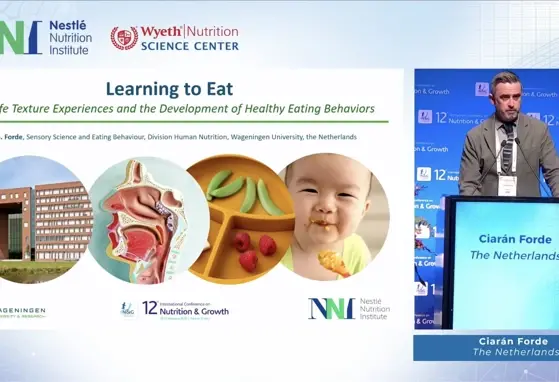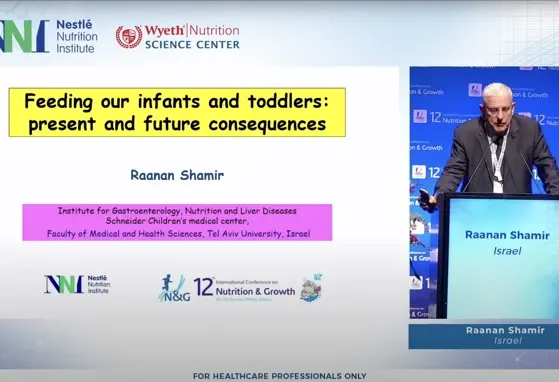Got a picky eater? How 'nature and nurture' may be influencing eating behavior in young children

For most preschool-age children, picky eating is just a normal part of growing up. But for others, behaviors such as insisting on only eating their favorite food item--think chicken nuggets at every meal--or refusing to try something new might lead to the risk of being over- or underweight, gastrointestinal distress, or other eating disorders later in childhood.
Parents and other caregivers often deem children as being "picky eaters" for a variety of reasons, but there is not a hard-fast definition in place for research. Nutrition and family studies researchers at the University of Illinois have collaborated for the last 10 years to understand the characteristics of picky eaters and to identify possible correlations of the behavior.
In a new study, the researchers wanted to see if chemosensory genes might have a possible relationship to picky eating behavior in young children. They found that certain genes related to taste perception may be behind some of these picky eating habits.
"For most children, picky eating is a normal part of development," says Natasha Cole, a doctoral student in the Division of Nutritional Sciences at U of I and lead author of the study. "But for some children, the behavior is more worrisome." Cole, also part of the Illinois Transdisciplinary Obesity Prevention Program at U of I, hopes the research can help identify the determinants of picky eating behavior in early childhood.
Leading up to the taste perception genes study, the U of I researchers identified common characteristics of picky eaters, ages 2 to 4 years, and divided these "types" of picky eaters into distinct groups. Further research from the team looked at how parenting styles may affect picky eating behavior and whether children exhibit picky eating behavior both at home and in childcare--homecare or center-based--situations.
"This has kind of been an evolution of the research, seeing an interaction rather than just seeing the child as on its own, which, when we first started trying to define a picky eater, we were just looking at the child," explains Soo-Yeun Lee, a professor in the Department of Food Science and Human Nutrition at U of I. "As we were moving into different parts of the research we realized, it's not just the child, it's the caregiver and the environment, as well."
Now, they are looking at the influence of "nature and nurture" on a child's picky eating behavior.
"Natasha is actually taking a deeper look at the child and genetic predisposition," Lee says. "She is looking at sensory taste genes and also at some of the behavioral genes that have been highlighted in the literature. She has been looking at the whole field of picky eating research, and classifying it based on 'nature vs. nurture.' Nature is the genetic disposition and nurture is the environment and the caregivers."
The idea, Lee explains, is based on an orchid/dandelion hypothesis. "There are some genes--the behavioral genes--that make the child more prone and more sensitive to being more behaviorally problematic when external influences are present that may not work out their way. That's the orchid concept. This may be a sensitive child who may not be as resilient with negative feedback or negative mealtime strategies given by parents, versus a dandelion child who is very robust and resistant to whatever, nurture or not, is given to them.
"There is that fine line, and it's not just the nurture, the environment, that's influencing that, but it's the child's susceptibility to the environmental cues as well," she adds.
For the study, the researchers collected information about breastfeeding history and picky eating behaviors, such as limited food variety, food refusals, and struggles for control, for 153 preschoolers, as reported by their caregivers. Saliva samples were also taken for DNA extraction and genotyping.
The researchers looked at genetic variation in single nucleotide polymorphisms (SNPs, pronounced "snips") from five candidate genes related to taste perception. Of the five, they found that two had an association with picky eating behaviors in the preschoolers. One (TAS2R38) was associated with limited dietary variety, and the other (CA6) with struggles for control during mealtime.
Interestingly, both the TAS2R38 and CA6 genes are possibly related to bitter taste perception. So it is not surprising that the children who are genetically "bitter-sensitive" may be more likely to be picky eaters (i.e. turning down Brussel sprouts or broccoli). Other chemosensory factors, such as odor, color, and texture, may affect eating behaviors as well. Further studies are needed to see how children's food preferences are affected by the look or smell of their food.
Along with continuing to look at genetic associations with picky eating, Cole is also interested in understanding how picky eating behaviors start even in children before 2 years of age. Most picky eating research has focused on children over 2 years, but eating habits begin to form before then. She and the research team recently published another study that reviews the research literature on picky eating in children younger than 2 years. The study discusses picky eating associations from an ecological model, starting with the child, and moving out to the child's environment.
"By two years, children know how to eat and have pretty set habits," Cole says. "There is a huge gap in the research when children transition from a milk-based diet to foods that the rest of the family eats."
Cole adds that the research involving children under 2 years shows that 22 percent of those children are perceived as picky eaters by their parents or caregivers. Surprisingly, she also found that each additional month of the child's age was associated with an increase in food-related fussiness. "So a child could go from rarely being a picky eater to being a frequent picky eater in less than a year," she says.
Collecting and integrating this comprehensive information from "Cell to Society" is critical to better understand nature-nurture interactions, as many questions in this area remain unsolved, explains Margarita Teran-Garcia, an assistant professor in nutritional sciences, human development and family studies, and the Carle Illinois College of Medicine at the U of I, and co-author of the paper.
"Variants in chemosensory genes are associated with picky eating behavior in preschool-age children," is published in the Journal of Nutrigenetics and Nutrigenomics. Co-authors include Natasha Chong Cole, Anthony A. Wang, Sharon M. Donovan, Soo-Yeun Lee, Margarita Teran-Garcia, and the STRONG Kids team.
Funding was provided in part by the National Institute of Food and Agriculture, U.S. Department of Agriculture, as well as by grants from the Illinois Council for Agriculture Research and the University of Illinois Health and Wellness Initiative.
Links : https://www.eurekalert.org/pub_releases/2017-10/uoic-gap100317.php
If you liked this post you may also like


Learning to Eat: Early life texture experience in the development of eating behaviors and dietary patterns


Feeding our infants and toddlers: present and future consequences